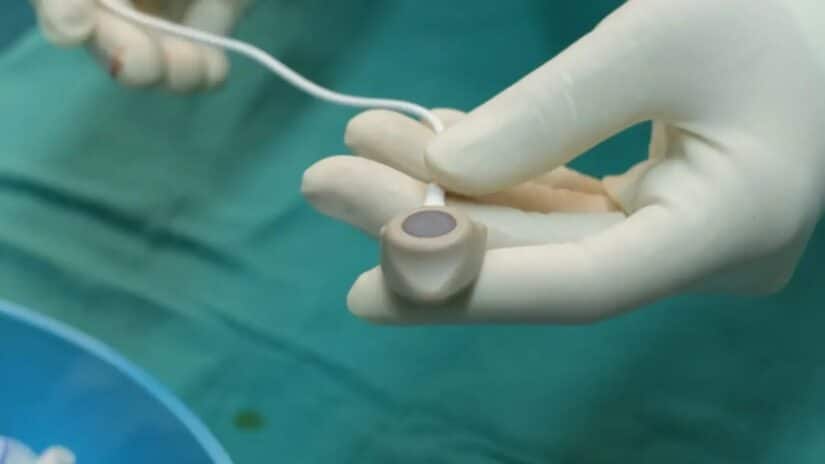
The Bard PowerPort, a widely used port catheter device designed for chemotherapy and intravenous delivery has come under intense scrutiny after thousands of patients reported serious medical complications. These patients have filed PowerPort Lawsuits claiming the device was defectively designed and caused severe injuries such as blood clots, organ damage, and catheter fractures.
As of September 2025, more than 1,900 Bard PowerPort Lawsuit cases have been consolidated into a multidistrict litigation (MDL No. 3081) in the U.S. District Court. The litigation alleges that Becton Dickinson, the parent company of Bard Access Systems Inc., failed to properly test and warn patients about the risks of the PowerPort device, leading to widespread injuries and even wrongful death. Individuals affected by these complications may benefit from speaking with a product liability lawyer to understand their rights and explore potential options for compensation.
What Is the Bard PowerPort and Why Are Lawsuits Rising?
The Bard PowerPort (also known as the PowerPort M.R.I. Implantable Port) is a type of port catheter implanted under the skin to provide easier access for chemotherapy or long-term PICC line infusions. It was marketed as a safe and efficient alternative for central venous ports, but thousands of patients have experienced device fracture, catheter migration, and deep vein thrombosis.
Manufactured by Bard Access Systems (a division of Becton Dickinson & Company), the PowerPort models were designed with polyurethane catheter tubing, a flexible material called Chronoflex AL. However, many lawsuits allege that this polyurethane catheter degraded over time, leading to manufacturing defects, design defects, and catastrophic failures inside the body.
Complications Linked to the Bard PowerPort Device
Patients across the U.S. have reported life-threatening medical complications after receiving a Bard PowerPort implant. Some of the most common issues include:
- Blood clots and pulmonary embolism: Defective catheter tubing can lead to clots that travel to the lungs, causing organ failure or stroke.
- Catheter fracture and device degradation: The PowerPort device can break apart, allowing fragments to travel through the bloodstream, potentially puncturing veins or organs.
- Port catheter migration: Movement of the port within the body may cause chemotherapy drugs to leak, leading to tissue necrosis and organ perforation.
- Infections and sepsis: Faulty sealing in the port catheter can allow bacteria to enter the bloodstream, resulting in staph infection, sepsis, or even death.
- Vascular damage and surgical removal: Patients often require emergency surgical removal after the device fracture, which adds more risk and medical costs.
Each of these injuries has been cited in product liability lawsuits against Bard PowerPort, alleging failure to warn, design defects, and manufacturing flaws.
FDA Involvement and Safety Warnings
The Food and Drug Administration (FDA) has monitored PowerPort device complaints for years. While the Bard PowerPort recall officially began in 2020, reports of manufacturing defects and safety warnings continue.
FDA recalls include:
- 2020: Bard PowerPort recall due to brittle port tips that risked breaking inside the body.
- 2021: AngioDynamics SmartPort recall over sterility issues.
- 2025: Smiths Medical ProPort recall for defective catheter tubing.
The FDA approval process for devices like the Bard PowerPort has been criticized for allowing potentially unsafe catheter devices to reach patients without long-term durability testing. The FDA continues to collect medical documentation and follow-up treatment reports related to PowerPort injuries.
The Growing Bard PowerPort Multidistrict Litigation
The Bard PowerPort Lawsuit MDL consolidates individual claims into one multidistrict litigation to streamline the lawsuit process. This federal action, overseen by Judge David G. Campbell, allows plaintiffs to share evidence, expert testimony, and medical findings related to PowerPort models and catheter devices.
Each plaintiff alleges Becton Dickinson and Company and its subsidiary Bard Access Systems Inc. marketed a defective port catheter device while downplaying serious risks such as blood clots, catheter fractures, and organ damage.
The MDL also examines successor liability and corporate accountability, questioning whether Becton, Dickinson and Company failed to update design standards after earlier incidents involving Bard Access Systems devices.
Bellwether Trials Scheduled for 2026
In July 2025, the court announced six Bellwether trials in the Bard PowerPort Lawsuit, each representing different injury scenarios. The results of these trials may influence future settlements or judgments across all pending cases.
Scheduled Bellwether Trials:
- Robert Cook – March 2, 2026
- Wanda Miller – April 27, 2026
- May Lattanzio – July 7, 2026
- Kimberly Divelbliss – August 17, 2026
- Judy Hicks – October 13, 2026
- Lloyd Sorenson – December 1, 2026
These Bellwether trials will help shape the outcomes for thousands of pending product liability lawsuits, possibly leading Becton Dickinson to negotiate settlements with affected patients.
Allegations in the Bard PowerPort Class Action
The class action and mass tort lawsuits allege multiple failures by Bard Access Systems and Becton Dickinson, including:
- Selling a defective catheter device prone to device fracture and catheter migration.
- Ignoring evidence of manufacturing defects and design defects.
- Failing to provide proper safety warnings and medical documentation to healthcare providers.
- Neglecting to warn patients about the risks of vascular damage, deep vein thrombosis, and organ failure.
Lawyers involved in the medical device litigation claim that the companies prioritized profit over patient safety. Plaintiffs seek compensation for medical costs, personal injury, wrongful death, and emotional distress.
Becton Dickinson’s Role and Corporate Responsibility
Becton, Dickinson and Company (BD), also known as Becton Dickinson & Company, acquired Bard Access Systems in 2017. Following the acquisition, the companies faced mounting scrutiny over their PowerPort models and other port catheter devices.
The Bard PowerPort Lawsuit claims that Becton Dickinson failed to redesign the polyurethane catheter tubing, leading to further reports of device degradation and organ perforation. Internal company documents cited in the MDL suggest that executives were aware of the manufacturing flaws years before initiating voluntary recalls.
Impact on Patients and Families
For patients and families, complications from the Bard PowerPort device can be devastating. Many have required surgical incision and device removal, followed by long-term follow-up treatment and medical imaging to ensure no fragments remain.
Victims often experience financial strain due to medical costs and missed work. In tragic cases, families have filed wrongful death claims after loved ones suffered fatal pulmonary embolisms or infections linked to port catheter devices.
What Victims Should Do Next
If you or someone you love has suffered from complications related to a Bard PowerPort or similar catheter line, it’s important to document all medical complications, hospital visits, and follow-up treatment. Retaining a personal injury lawyer or mass tort lawyer can help you understand your rights in this ongoing PowerPort Lawsuit.
Victims may be entitled to compensation for:
- Medical costs and hospital bills
- Surgical removal and post-surgery recovery
- Pain and suffering
- Loss of income and future earning potential
- Wrongful death damages
A qualified personal injury attorney experienced in medical device litigation can help you navigate this process efficiently.
About Ted Law
At Ted Law Firm, We serve families across Aiken, Anderson, Charleston, Columbia, Greenville, Myrtle Beach, North Augusta and Orangeburg. Our goal is to educate and empower patients impacted by medical complications, manufacturing defects, and design defects caused by unsafe medical devices.Contact us today for a free consultation
